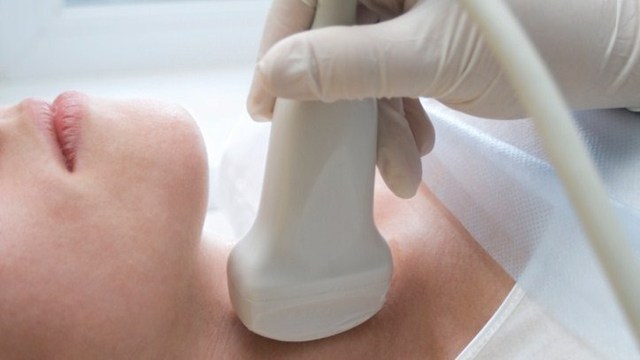Vitamin D is an important vitamin that not only regulates calcium, but also has many other beneficial actions. Not many endocrinologists realize this, but several articles published over 20 years ago showed that patients with hypothyroidism have low levels of vitamin D.
This may lead to some of the bone problems related to hypothyroidism. It was thought that one of two mechanisms may explain the low levels of vitamin D in patients with hypothyroidism, 1) the low levels of vitamin D may be due to poor absorption of vitamin D from the intestine or 2) the body may not activate vitamin D properly. Other articles have demonstrated that patients with Graves disease also have low levels of Vitamin D.
Importantly, both vitamin D and thyroid hormone bind to similar receptors called steroid hormone receptors. A different gene in the Vitamin D receptor was shown to predispose people to autoimmune thyroid disease including Graves’ disease and Hashimoto’s thyroiditis. For these reasons, it is important for patients with thyroid problems to understand how the vitamin D system works.
Sources of Vitamin D
Vitamin D is really two different compounds, ergocalciferol (vitamin D2), found mainly in plants and cholecalciferol (vitamin D3), found mainly in animals. Both of these hormones are collectively referred to as vitamin D, and they can either be obtained in two ways. One is by exposure of the skin to the ultraviolet (UV) rays of sunlight or also from dietary intake.
Vitamin D is found naturally in fish (such as salmon and sardines) and fish oils, eggs and cod liver oil. However most Vitamin D is obtained from foods fortified with Vitamin D, especially milk and orange juice. Interestingly, as breast feeding has become more popular, the incidence of Vitamin D deficiency has increased as less fortified milk is consumed.
Vitamin D deficiency may also occur in patients with malabsorption from their intestine, such as in the autoimmune disease called Celiac Disease, which occurs frequently in patients with thyroid problems. Multivitamins also contain Vitamin D, as does some calcium supplements like Oscal-D and Citracal plus D.
Different Forms of Vitamin D and How To Diagnose Vitamin D
Vitamin D itself is inactive and needs to get converted to the liver to 25-hydroxy vitamin D (25-OH vitamin D) and then in the kidney to 1, 25-hydroxy vitamin D. It is only the 1, 25- OH vitamin D which is biologically active. This form of vitamin D acts to allow for absorption of calcium from the intestinal tract. Therefore, patients with low vitamin D levels will have low calcium and in severe cases get rickets (in children) or osteomalacia (in adults) which is when the bone bows out and is poorly formed. In mild cases of vitamin D deficiency, osteoporosis occurs, but low calcium is rare.
The conversion from the 25-OH vitamin D to the 1, 25-OH vitamin D that occurs in the kidney is catalyzed by parathyroid hormone, also called PTH. Therefore, patients with very low vitamin D levels will have relatively high PTH levels often with low calcium levels.
This is similar to patients with primary hypothyroidism having elevated TSH levels while having normal thyroid hormone levels. Additionally, the 25-OH vitamin D form which is the storage form and is much more abundant that the 1, 25-OH vitamin D form which, although is active, is less abundant. Therefore, in states of vitamin D deficiency, low levels of 25-OH vitamin D are found, but the 1, 25-OH vitamin D levels are either normal or actually slightly high. They are slightly high because the excess PTH that is stimulated by the low 25-OH vitamin D levels stimulates the conversion up to 25-OH vitamin D to the 1, 25-OH vitamin D. Thus, patients that are vitamin D deficient usually have a low 25-OH vitamin D level, a high PTH level, a low normal calcium, and a normal or an elevated 1, 25- OH vitamin D level. However some patients may actually have a high normal calcium as
the elevated PTH and 1, 25-OH vitamin D may cause increased calcium absorption from the GI track and reabsorption from the kidney. If 25-OH vitamin D levels were not measured, these patients might have been incorrectly diagnosed with mild hyperparathyroidism as they have a high normal calcium and a high PTH.
Dr. Friedman usually recommends measuring a 25-OH vitamin D to determine if a patient does have vitamin D deficiency. Occasionally, PTH and calcium, can also be ordered. The 25-OH vitamin D assay has a normal range of approximately 20-60 ng/dL. However, this range may be too low for many patients. In general, Dr. Friedman would recommend treatment of patients that have a 25-OH vitamin D of less than 30 ng/dL. Optimal levels of 25-OH Vitamin D for patients with thyroid diseases are probably 35-60 ng/dL.
Treatment of Vitamin D Deficiency
There are several ways to correct for the depletion of vitamin D, and these would involve either increasing sunlight exposure or increasing dietary intake. In general, Dr. Friedman feels there is an ongoing battle between endocrinologists and dermatologists about sunlight exposure, and mild sunlight exposure probably does not have that much of an increased risk of skin cancer yet would be helpful to prevent vitamin D deficiency. Because of our busy schedule, many of us do not go outside during the day much and our sunlight exposure is minimal. When we do go outside, we are usually covered up with clothes. Blacks and other dark skinned patients absorb less Vitamin D and need more sunlight exposure. Dr. Friedman
recommends a patient to be exposed to the sun for 15-30 minutes a day, especially in the morning, to correct for vitamin D deficiency. However, in northern latitudes, little light of the proper wavelength goes through the atmosphere in the winter, so this exposure needs to occur in the spring and summer at which time stores of vitamin D are built up. The body has mechanisms so that too much vitamin D can not be synthesized by prolonged sun exposure.
An alternative is to go to a tanning salon for approximately three times. When it comes to replacing Vitamin D, again we have to understand the difference between
D2 (ergocalciferol) and D3 (cholecalciferol). Even though both forms of vitamin D are fat soluble, studies have shown that if you take D2, your levels rise, but then fall back to almost baseline in a few weeks. In contrast, after D3, the levels stay high for a longer period of time. Dr. Friedman and other doctors frequently prescribe a high dose (50,000 iu) of vitamin D weekly for 8 weeks, but this is D2 and in many people the levels drop down to normal after nor taking it for a few months. This needs to be given by a prescription. Vitamins and preparations like Oscal D contain D3, however the amount in these preparations are small.
For example, each multivitamin contains 400 international units of vitamin D3 so a total of 800 international units of vitamin D will probably prevent Vitamin D deficiency and may correct very mild cases of low vitamin D levels, but is not enough to correct most cases of vitamin D deficiency. For more severe levels, the patient can take 50,000 international units of vitamin D orally once or twice a week.
Dr. Friedman finally found a product that has high doses of D3 that could be used to rapidly restore vitamin D levels in patients that are deficient and keep the levels up. This product 50,000 iu d3 is sold in bottles of 12 by bio-tech-pharm.com and is catalogue D-3-50. The website is https://secure.bio-techpharm.
com/detail.aspx?product_id=19&cat_id=2&subcat_id=0. You may also order the 100
pill bottle at https://secure.bio-techpharm.
com/detail.aspx?product_id=20&cat_id=2&subcat_id=0 and have enough for
maintenance or share it with your friends.
For a 25-OH vit D levels between 20 and 25, Dr. Friedman recommends taking one pill a week for 8 weeks, then checking a 25-OH vitamin D. If levels are in the normal range, then you can take one pill a month for the next 6-12 months for maintenance. After 6 months, you should be adequately treated. For patients with 25-OH vit D level between 25 and 30, one pill a week for 6 weeks is recommended. For patients with 25-OH vit D level less than 20, it is recommended to see your Endocrinologist to determine proper treatment. If levels are in the normal range, then you can take one pill a month for the next 6-12 months for maintenance.
Please take the pills weekly and not daily.
The main side effect of vitamin D therapy is overtreatment leading to hypercalcemia. Patients with kidney problems cannot convert vitamin D to the active 1, 25-OH vitamin D levels and need to take calcitriol which is 1, 25-OH vitamin D. Additionally, patients with hypoparathyroidism are usually placed on the calcitriol as well.
Conclusion
Vitamin D appears to have many effects besides being related to calcium and bone health. Some patients with low vitamin D levels have fatigue and bone pain, which is easily reversible with proper replacement of vitamin D. Vitamin D may protect against heart disease and some types of cancer. Vitamin D may also have some role in regulating the immune system and also reducing blood sugar levels in patients with diabetes. Proper vitamin D levels are needed to prevent osteoporosis. In conclusion, proper vitamin D levels are essential for one’s health, especially if you have thyroid problems. Unless a patient is exposed to sunlight or foods containing vitamin D, screening for Vitamin D deficiency is recommended for all thyroid patients.
This article is not intended to offer medical advice and is offered for information purposes only. Do not act or rely upon information from this article without seeking professional medical advice. For more information about Dr. Friedman or to schedule an appointment, please go to goodhormonehealth.com





Add a Comment11 Comments
Dear Dr Friedman,
Thank you for your article however there is one point which I disagree with.
Your inference that vitamin D could relate to increased breast feeding is I think and bad inference to make to mothers. There are so many benefits from breast feeding and so many negatives attached to formula that you just have to look at the third world (yes even if we have better water although that could be debated). What you will find is a bigger correlation between vitamin D deficiency and the use of sun block (particularly on children) and the common vitamin D deficiency past on from parent to child. Pre conception health of both parents is key.
March 28, 2009 - 8:01amThis Comment